Implementing a Compact and Flexible Automated Test System Using Multifunction PXI I/O Bundles
Contributed By DigiKey's North American Editors
2023-11-14
The implementation of a multifunction automated test system for the design validation, component test, and production test of industrial, consumer, vehicular, medical, and other electronic systems requires a variety of test and measurement instruments. Also, the large number of sensors used in modern designs requires multiple analog and digital channels, and a given test bed must be able to scale easily and cost-effectively.
Meeting these requirements can be challenging using standalone test equipment. Instead, designers can opt for a modular approach using a standardized form factor like PCI eXtensions for Instrumentation (PXI). Doing so can provide the flexibility and productivity gains necessary for a rapidly changing, multifunction, and multichannel test environment while keeping costs to a minimum.
This article provides a brief introduction to PXI and uses a sample test setup to highlight its benefits. It then introduces PXI multifunction I/O bundles from NI and discusses how to configure them.
Why use PXI?
As test beds become more complex, the use of standalone equipment results in multiple screens, front panels, line cords, and slow instrument computer interfaces. This leads to confusion and unnecessary errors that extend test time and reduce productivity. Additionally, updating or reconfiguring “rack-and-stack” test systems to add features such as more channels can be difficult and expensive. Single-function instruments require the exchange of the whole instrument to change functionality, and the associated communication, synchronization, and reprogramming complicate the issue.
PXI instruments offer the needed functionality in a standard and compact form factor. In this scenario, multiple instruments like analog and digital input/output (I/O) channels fit side-by-side in a common chassis. PXI also simplifies the addition and integration of more complex instruments like oscilloscopes, multimeters, and signal generators. The instruments communicate internally with a common bus structure, assuring synchronous operation, while a PC running unifying software allows all the instruments to be controlled from a common screen.
A common testing scenario
One example that demonstrates the type of measurements that the multifunction I/O module is designed to handle comprises a variable speed drive (VSD) in an intelligent motion control system that requires multiple types of sensors (Figure 1).
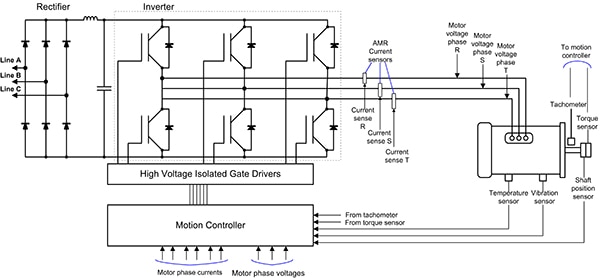 Figure 1: A VSD uses multiple analog and digital sensors that need to be tested and their functionality verified. (Image source: Art Pini)
Figure 1: A VSD uses multiple analog and digital sensors that need to be tested and their functionality verified. (Image source: Art Pini)
Testing the sensor components of a VSD ensures the correct operation of motor temperature, rotational speed, shaft position, torque, and vibration-level sensors. Most of the sensor outputs are analog signals with a low signal bandwidth of less than 1 megahertz (MHz). Some analog sensors, like anisotropic magnetoresistive (AMR) current sensors and shaft position sensors, use resistive bridges and require differential inputs in the measurement instrument. Some sensors, like the tachometer, may be digital and require one or more digital inputs for monitoring.
Multifunction I/O test modules are well-suited to testing these types of sensors, offering analog voltage ranges, bandwidths, and sample rates matched to the analog sensor outputs. They also include digital I/O channels with sample rates greater than the data rates being tested.
There are similar test requirements for applications in robotics, automotive, and industrial environments where multiple sensors are used in each application.
The multifunction I/O test bundle
NI’s PXI bundles consist of a five-slot PXI chassis and either of two NI multifunction I/O modules. The PXI multifunction modules offer a mix of analog I/O, digital I/O, counter/timer, and triggering functionality (Figure 2).
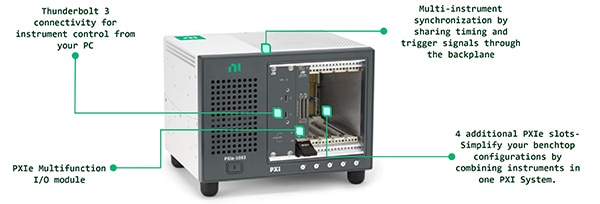 Figure 2: A PXI multifunction I/O bundle provides a standalone automated test and measurement system, including a multifunction PXI I/O module and four open slots for additional instruments. (Image source: NI)
Figure 2: A PXI multifunction I/O bundle provides a standalone automated test and measurement system, including a multifunction PXI I/O module and four open slots for additional instruments. (Image source: NI)
The chassis provides power and an internal bus structure to link all the modules via its backplane. The PXIe bus allows multi-instrument triggering and synchronization. PXIe is a subset of PXI that uses a high-speed serial interface instead of PXI’s parallel data bus. A Thunderbolt 3 interface provides a fast interface via a USB 3.0 connector to a computer. Two USB 3.0 connectors allow daisy chaining of multiple PXIe chassis. The four open slots can accommodate other instruments such as oscilloscopes, digital multimeters, waveform generators, multiplexer switches, source measurement units, and power supplies.
For example, NI’s 867123-01 multifunction I/O bundle consists of a PXIe-1083 five-slot chassis, a PXIe-6345 multifunction I/O module, and associated cables. Alternatively, the 867124-01 bundle uses the same chassis and cabling but uses a PXIe-6363 module with input mass termination connectors on the front panel (Figure 3).
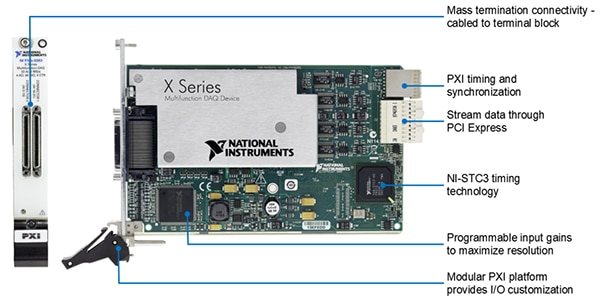 Figure 3: A detailed view of the PXIe-6363 multifunction I/O module includes a view of the input mass termination connectors on the front panel. (Image source: NI)
Figure 3: A detailed view of the PXIe-6363 multifunction I/O module includes a view of the input mass termination connectors on the front panel. (Image source: NI)
The two product bundles differ in the number of analog input channels, the number of analog output channels, the number of digital I/O channels, and the maximum sampling rate (in kilo samples per second (kS/s) and mega samples per second (MS/s)) (Table 1).
| ||||||||||||||||||||||||||||||||||||
Table 1: Shown is a comparison of the PXIe-867123 and PXIe-867124 multifunction I/O bundles. (Table source: Art Pini)
Analog channels
Both bundles' analog input (AI) channel internal configurations are identical. A single analog-to-digital converter (ADC) is shared over multiple input channels using an analog multiplexer (Mux) to sequence each input (Figure 4).
 Figure 4: The configuration of the analog channel inputs includes a Mux to route the individually configured inputs into a single ADC. (Image source: NI)
Figure 4: The configuration of the analog channel inputs includes a Mux to route the individually configured inputs into a single ADC. (Image source: NI)
Input signals are connected via the front panel I/O connector. In addition, the AI sense connection and the AI ground are also available to establish accurate reference levels for measurements. The Mux selects one of the analog inputs; this could be a single channel for multiple measurements, or multiple channels for sequenced measurements. The selected channel is routed through the analog input configuration selection. There are three input configurations: differential, referenced single-ended (RSE), or non-referenced single-ended (NRSE). The differential connection, recommended for floating sources, uses two of the available analog inputs as the inverting and non-inverting differential inputs. The differential inputs are not ground-referenced and can be connected to floating sources. The differential input configuration suppresses common-mode noise.
The RSE input configuration ties the inverting input (AI-) to ground at a single point, either at the AI ground for a floating source, or at the source ground for a ground-based source.
The NRSE configuration for a floating source connects the AI- input to the negative terminal of the source and to the AI sense line with a resistive return to AI ground. For a ground-referenced source, the AI- terminal connects directly to the source ground and to the AI sense line.
The configured input is routed to the NI programmable gain instrumentation amplifier (NI-PGIA), which amplifies or attenuates the incoming signal to match the input voltage range of the ADC. There are seven programmable input voltage ranges for the analog signals between ±100 millivolts (mV) and ±10 volts. The input range of each input signal channel is individually programmable, and the gain is switched along with the input signal. The NI-PGIA minimizes settling times for all input voltage ranges to maximize the voltage measurement accuracy.
The ADC for both digitizers has a 16-bit amplitude resolution. The analog signal is quantized into 65,536 possible levels. This provides 320 microvolts (mv) resolution in the ±10 volt range, and 3.2 mv in the ±100 mV range.
The digitized outputs of the ADC are stored in the AI first in, first out (AI FIFO) memory.
The multifunction modules also have an analog output (AO) capability. There are either two or four analog outputs, depending on the model, with a common output clock (Figure 5).
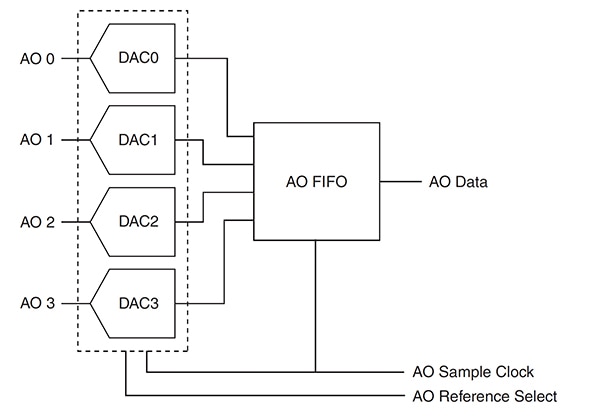 Figure 5: In a typical analog output stage, the AO FIFO memory buffer holds the waveform sample values downloaded from the host. (Image source: NI)
Figure 5: In a typical analog output stage, the AO FIFO memory buffer holds the waveform sample values downloaded from the host. (Image source: NI)
The AO FIFO memory buffer holds the waveform sample values downloaded from the host computer. Having the samples stored in the FIFO means that analog waveforms can be output without the computer connection. The AO Sample Clock clocks the data from the FIFO into the digital-to-analog converters (DACs) that convert the digital sample values into an analog voltage. The AO Reference Select is used to change the analog output range. The AO Reference Select can be set to 10 or 5 volts, or an external reference can be applied via the analog PFI (APFI).
Digital channels
Digital channels include both input and output capabilities to acquire or generate digital signals on a common line (Figure 6).
 Figure 6: Bidirectional digital I/O lines (P0.x) can acquire and generate digital signals. (Image source: NI)
Figure 6: Bidirectional digital I/O lines (P0.x) can acquire and generate digital signals. (Image source: NI)
The P0.x lines work with static or high-speed digital lines as inputs or outputs. The PXIe-63xx series modules also have sixteen Programmable Function Interface (PFI) lines that can be user-configured as a PFI interface or a digital I/O channel. As an input, the PFI channel can route an external source for analog input, analog output, digital input, digital output, or counter/timer functions. As an output, many of the analog input, analog output, digital input, digital output, or counter/timer functions can be routed to each PFI terminal.
All these lines accept logic high levels between 2.2 and 5.25 volts and logic low levels from 0 to 0.8 volts. The digital lines are clocked at up to 10 MHz.
There is a digital filter on each digital line that is used to debounce the digital input signals. There are three filter settings based on the filter clock frequency used: short, medium, or high. The short setting guarantees that a pulse width of greater than 160 nanoseconds (ns) will pass, the medium setting passes pulse widths of 10.24 microseconds (ms) or greater, and the high setting passes pulse widths of 5.12 milliseconds (ms) or greater. Pulses with widths narrower than half the passed pulse width are guaranteed to be suppressed.
Returning to the VSD motor example, the digital inputs can be used to decode the shaft position. The shaft position can be read from the digital outputs of an optical encoder. The optical encoder has three digital outputs: a once-per-revolution index pulse and two square waves with a 90˚ phase difference called quadrature outputs. These quadrature outputs are generally referred to as “A” and “B.” By combining the index pulse with the quadrature outputs, absolute shaft orientation and the direction of rotation can be calculated.
Counter/timers
Both PXIe modules include four general-purpose 32-bit counter/timer stages and a frequency generator stage. There are eight signal input paths to each counter/timer stage, and the input of the counter timer can be any of fourteen available signals. The selected signal must be applied to the clock; there is no provision to count down the counter/timer input. The counter/timers can be used to count edges, measure frequency or period, or take pulse measurements like width, duty cycle, or the time between two edges.
An example counter/timer application is measuring the frequency of the index pulse from the optical encoder in the VSD motor illustration. The frequency can be scaled to read the motor rotational speed in revolutions per minute.
The frequency generator or counter output can generate a simple pulse, a pulse train, a constant frequency, frequency division, or an equivalent time sampling (ETS) pulse stream.
The ETS pulse stream produces a pulse output with an incrementing delay from the counter gate pulse. This can provide sampling timing for repetitive waveforms, with a higher sampling rate for analog inputs with frequencies higher than the Nyquist frequency of the digitizer.
Software support
Several software packages support multifunction I/O modules. NI’s LabVIEW provides a graphical programming environment that simplifies data acquisition, processing, and analysis. It also allows the creation of interactive user interfaces for testing, monitoring, control, and data archiving.
For users who wish to generate their own code, NI supplies drivers supporting the programming language of choice, including Python, C, C++, C#, .NET, and MATLAB.
NI also offers a no-code software package called FlexLogger. FlexLogger lets users view, save, and analyze test data with built-in processing tools and customizable dashboards. It features the ability to set limits on measured values and to alarm out-of-limit conditions. FlexLogger also allows users to customize the user interface visualization tools by adding graphs, numeric indicators, and meters (Figure 7).
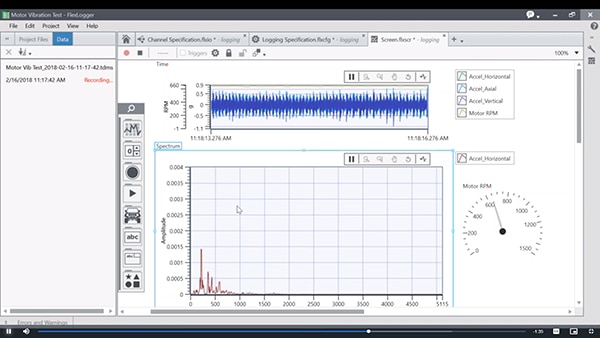 Figure 7: The FlexLogger display shows the measurement of the vibration of a motor using an accelerometer and a tachometer to look for a mechanical resonance. (Image source: NI)
Figure 7: The FlexLogger display shows the measurement of the vibration of a motor using an accelerometer and a tachometer to look for a mechanical resonance. (Image source: NI)
The screen shows the scaled vibration level in g versus time in the upper graph. The tachometer readout, measuring rotational speed in RPM, is shown as a dial gauge in the lower right corner. The fast Fourier transform (FFT) (one of the available signal processing tools) of the vibration data shows vibration level versus frequency in the lower graph.
Conclusion
Test systems must adapt to changing requirements across applications requiring lots of I/O. The NI multifunction I/O bundle can form the basis of a multichannel automated test system offering a combination of analog and digital input and output channels and multiple counter/timers. Packaged in a PXIe chassis with extra slots for other modular test and measurement instruments, it provides users with the scalability necessary for cost-effective tests.

Disclaimer: The opinions, beliefs, and viewpoints expressed by the various authors and/or forum participants on this website do not necessarily reflect the opinions, beliefs, and viewpoints of DigiKey or official policies of DigiKey.









